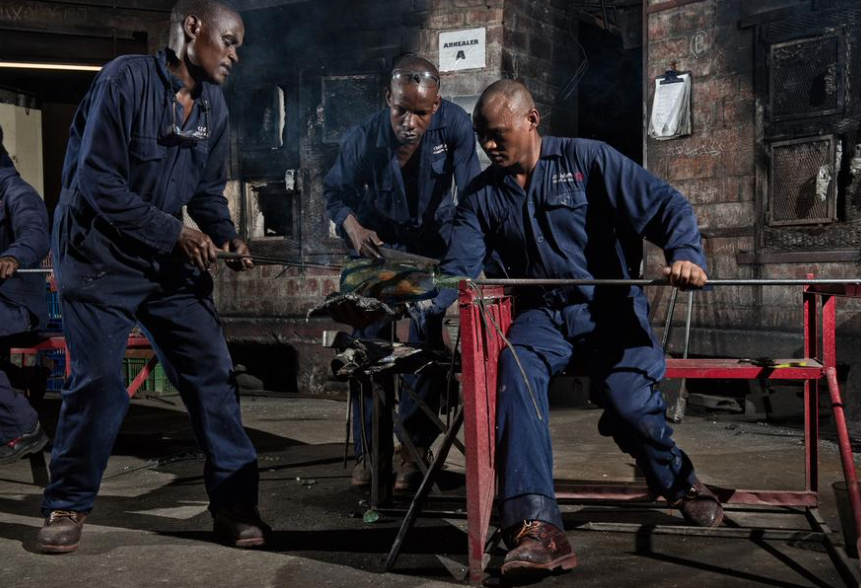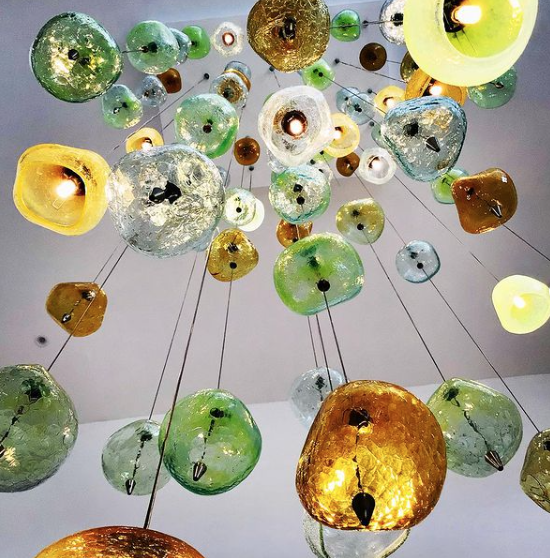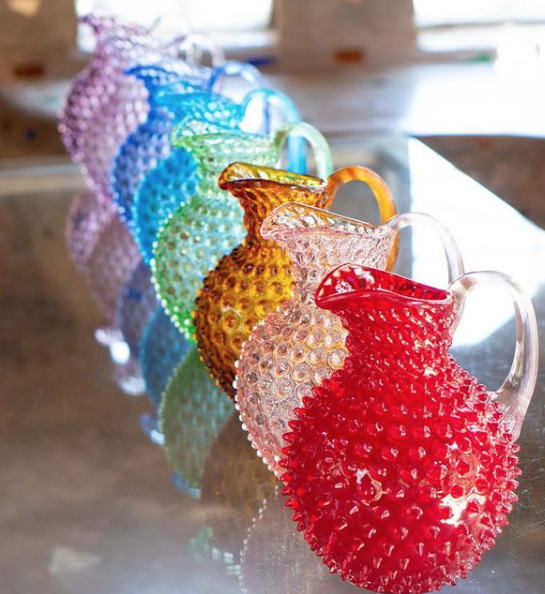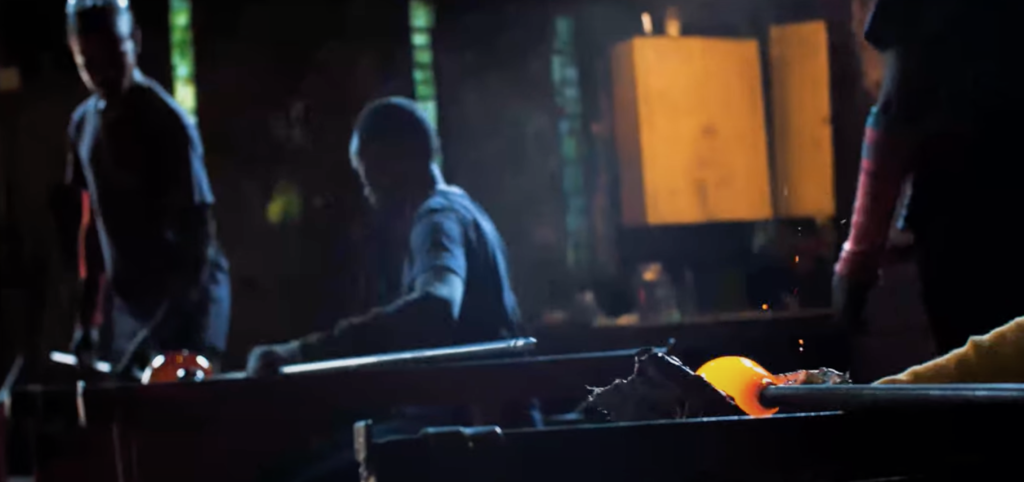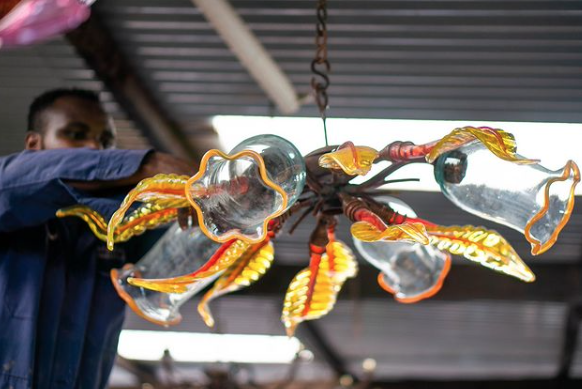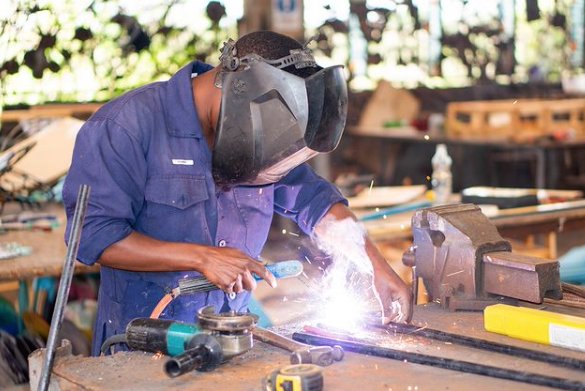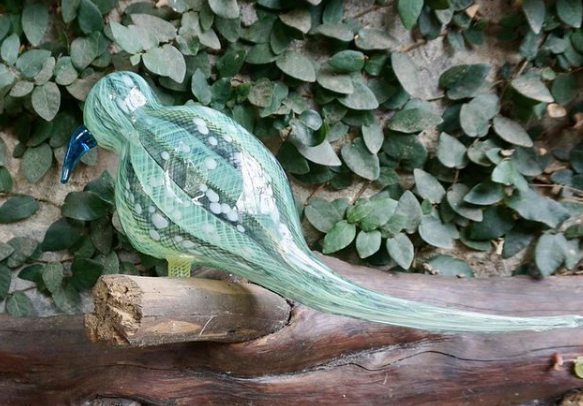How is sustainability incorporated into your process?
Glass is the ideal circular economy material. We’ve been using recycled window and bottle glass to make objects for the last 30 years. We use recycled paper to pack our glass. We also recycle boxes and bubble wrap. We burn used engine oil to power our annealers and furnaces. We recycle our refractories. We repurpose imperfect objects. We’re working on a solar farm to supply our electricity.
What was the reason you decided to pursue sustainable practices?
No brainer. Cheaper and less energy needed to melt cullet than make to glass from scratch. Needed an affordable medium – lots of waste glass available. Wanted to start glass as a craft in Kenya.
What would you like to see in the future for sustainability in art?
I’ve seen the wonder on people’s faces as they watch what we do. Glass, specifically hot glass, is uniquely placed in that it’s a discipline that requires a high degree of mechanical skill before any meaningful creative expression can occur. As such it is often regarded as unattainable. We have been working for years to break that conception and create access to the medium while still maximizing the effect of the material – making its transparent and colourful magic available at reasonable cost.
We blur the lines between art and craft – creating a kind of functional and purposeful hybrid that pleases and performs a function at the same time. I would love to become more of a posterchild for creative entrepreneurship – we are already a household name in Kenya, and I see this idea as the vehicle for sustaining our craft, and therefore allowing offshoots of expression which would not be available without the bedrock of the craft.
What impact are you seeing & how do you measure success?
Through simple metrics – surviving for thirty years in a third world emerging economy – ostensibly as a luxury product. Seeing the results of skills learnt in our studios being applied in other areas. Disproportionate brand recognition to the size of our organization.
How has the COVID-19 pandemic impacted your studio or organization?
In quite a few ways. Main takeaways were – have several disciplines and be flexible about shifting between them, depending on demand. We were ready to close in March 2020, as retail crashed. But then the jobs continued to trickle in. We started out online retail. Our partnership with Procera (making gin bottles) has kept the ‘engine room’ running. Larger bespoke projects have also been still happening. People are spending on their spaces. Upgrading their homes. Valuing things that make them feel happy. We also built up our dalle de verre furniture department into a nine-man team during 2020. We are busier now, a year later, than we’ve ever been.

